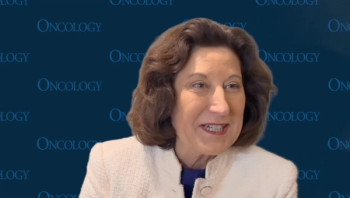
Mutations May Identify Which Breast Cancers Will Relapse
New research has shown that there are genetic factors that drive which breast cancers will relapse and metastasize and which will not, and the identification of these factors may help clinicians identify patients at higher risk for recurrence.
New research has shown that there are genetic factors that drive which breast cancers will relapse and metastasize and which will not, and the identification of these factors may help clinicians identify patients at higher risk for recurrence.
This research (abstract 1804) was presented by Lucy Yates, MD, a clinical research oncologist from the Wellcome Trust Sanger Institute, Cambridge, United Kingdom, at the 2015 European Cancer Congress (ECC).
“We have found that some of the genetic mutations that drive breast cancers that relapse are relatively uncommon among cancers that do not relapse at the point of primary diagnosis,” Yates said in a prepared statement. “We believe that the differences we have seen reflect genetic differences that can predispose a cancer to return, combined with mutations acquired throughout the period from first diagnosis to the subsequent relapse. Some of these genetic alterations are potentially targetable with drugs.”
According to the study, much of what is known about driver mutations in breast cancer was learned studying primary tumors; however, about one in five breast cancers will go on to recur locally or with distant metastasis, and less is known about whether these same mutations are present in these cancers.
Yates and colleagues designed this study to try to find out more about the driver landscape of breast cancers that recur. They analyzed data from 1,000 patients with breast cancer and identified somatic mutations in 365 genes known to be involved in the cancer process. The researchers looked at 161 samples taken from patients with local relapse or distant metastases and compared them with previously published mutation data from 839 primary, localized breast cancer samples (primary tumors).
Testing showed that there were genetic differences between these two tumor types, with some of the differences acquired during the metastatic phase. Among later-stage mutations, the researchers found that two related genes within the same signaling pathway, JAK2 and STAT3, had tumor suppression activity.
“Within some breast cancers, a disruption in this signaling pathway seems to be advantageous for survival of the cancer,” Yates said. “Interestingly, this is in contrast to the role of JAK2 in some other cancers where overactivity of the gene drives malignancy rather than suppresses it.”
They also found that established tumor suppressor genes TP53 and ARID1A were most strongly associated with relapse and metastases in estrogen receptor–positive disease. In addition, the researchers found that aberrations in the PI3K-AKT pathway occurred in 57% of estrogen receptor–positive disease and 37% of triple-negative disease at relapse; whereas, the role in the latter was infrequent among primary tumors.
Commenting on the results of this study, Peter Naredi, MD, PhD, the ECCO scientific co-chair of ECC, who was not involved in the research, said: “Information such as that which Dr. Yates will present is very important in the era of precision medicine. Not only can we better choose the right treatment combination as our information about the primary tumor increases, and hence prevent overtreating patients who will not benefit, but this will also help us select the right therapy for each breast cancer patient. This study also underlines the fact that we should consider a recurrence of a cancer as a new event, and carefully select the right treatment for the recurrent tumor as opposed to just relying on information from the first occurrence.”
Newsletter
Stay up to date on recent advances in the multidisciplinary approach to cancer.
















































































